#ishtar creative studio
Explore tagged Tumblr posts
Photo




BIG ANNOUNCEMENT!
I teamed up with fellow creators and we opened a store!! Some of my works are now available to purchase as prints!! I’ll also be making some art exclusively for there, so please keep a look out!✨
Words can’t express how honored I feel to be included and be surrounded by such amazing people. The amount of work that’s being put into this is incredible and I’m so excited to share this all with you. But the store has only just opened and boosting it will help immensely! Any reblogs, comments and likes are very appreciated!
Your support means the world to me and I couldn’t have done this without you guys. Please give some love to Saido-chan, CrZa, Ivory and Cupid as well! They’re so talented and deserve all the love in the world!
Visit the store here!
13 notes
·
View notes
Text
Favorite films discovered in 2024
This year, I focused more on rewatching films I hadn't seen in a long time rather than racking up new titles. However, I still encountered plenty of new faves, many of them movies that have been on my watchlist for years. Here are the top twenty.
But first, some interesting patterns in this year's list...
Most represented decade: 1960s
Earliest film represented: 1932
Newest film represented: 1999
Creatives who show up more than once: Robert Mulligan, Walter Matthau, Boris Karloff
The Window (dir. Ted Tetzlaff, 1949)
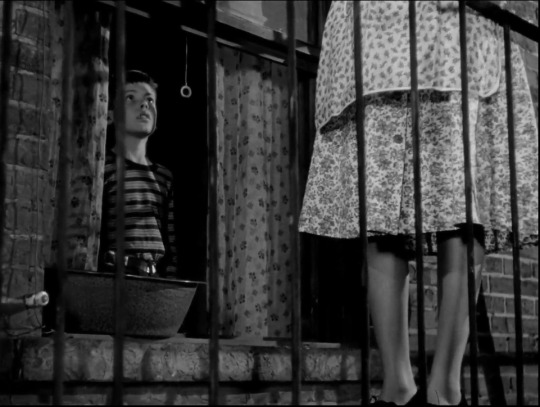
A young boy (Bobby Driscoll) living in a squalid NYC apartment building witnesses his neighbors (Paul Stewart and Ruth Roman) committing a murder. Unfortunately, the kid's penchant for tall tales prevent anyone from believing him-- except for the killers, eager to alleviate themselves of an inconvenient witness.
Precious few thrillers earn the moniker “Hitchcockian” as well as this intense little gem from RKO. The Hitchcock vibes make sense when you consider Hitchcock’s cinematographer from Notorious was in the director’s chair and the source material was written by Cornell Woolrich, also responsible for the short story behind Rear Window. Augmented by on-location photography of New York City and a grimy, desolate sense of urban decay, The Window is both a great suspense yarn and classic film noir. Despite having a kid for a lead character, the film pulls no punches: both its small-time crook villains and the city setting feel palpably dangerous.
My Neighbors the Yamadas (dir. Isao Takahata, 1999)

The Yamadas, an average middle-class Japanese family, navigate the perils of sharing a television set, a kid going missing during a shopping trip, awkward wedding speeches, and other misadventures.
Between the original Studio Ghibli directorial duo of Hayao Miyazaki and Isao Takahata, Miyazaki will always be the more popular filmmaker, but I think Takahata’s films are more intellectually and emotionally rewarding. This is not meant as a hit on Miyazaki’s undeniable greatness, but Takahata’s movies are far more challenging. That being said, My Neighbors the Yamadas is a lighter entry in his filmography, a slice of life comedy about the eponymous family and their shenanigans in modern Japan. However, beneath the whimsical humor runs an undercurrent of melancholy, an awareness of the transience of life in both its lovely and absurd moments. To date, it gets my vote for the most underrated Ghibli film.
A New Leaf (dir. Elaine May, 1971)

After squandering his ample inheritance, a middle-aged New York layabout (Walter Matthau) decides to marry an eccentric botanist (Elaine May) for her money then murder her ASAP.
Elaine May only directed a few films, but the two I’ve seen—this and the long-maligned Ishtar—were a lot of fun. A New Leaf is the better film though, far more focused and consistently funny. I don't usually belly laugh when watching a movie at home alone, but I did several times here. Even just thinking about some of the things that happen in this film can make me start laughing again. I understand the existing version was not May’s preferred cut and she felt it was butchered by the studio. Even so, this is a great movie regardless of that and one I really want to rewatch soon.
Cash on Demand (dir. Quentin Lawrence, 1961)

Uptight, unpleasant bank manager Harry Fordyce (Peter Cushing) is the boss from hell to his employees, but to criminal extraordinaire Gore Hepburn (Andre Morrel), he's the key to a successful heist. Posing as an insurance representative to get access to Fordyce's office, Hepburn tells the manager he's holding his wife and child, whose lives will be forfeit if he doesn't help him relieve the bank of ninety thousand pounds.
Ho, ho, ho, guess who's got a new Christmas classic to enjoy every year? Cash on Demand is not only a strangely enervating riff on A Christmas Carol's basic set-up (a miserable man is spiritually redeemed through an encounter with ghosts-- or in this case, bank robbers), but it's one of the best, tightest one-location thrillers I have ever seen. I genuinely had no idea where the story was going and found myself in absolute agony as the noose grew tighter around our protagonist's neck. It's a testament to both the writing and Peter Cushing's detailed, very human performance that this film is the emotionally powerful piece of work that it is, and not just a fun, clockwork heist yarn.
Letter from an Unknown Woman (dir. Max Ophuls, 1948)
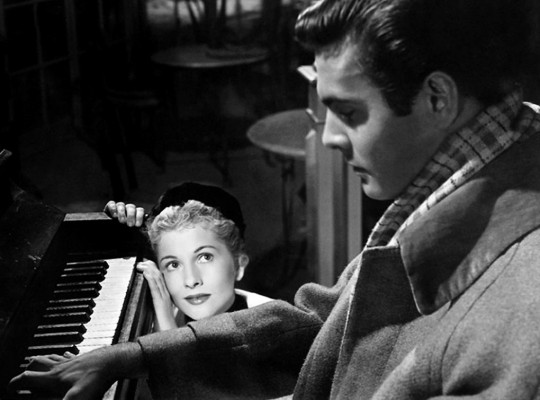
While trying to evade a duel, an aging playboy (Louis Jordan) receives a letter from a dying woman (Joan Fontaine) who claims he was the love of her life. The letter recounts the details of their love affair, which was the centerpiece of this woman's life and only a mere erotic interlude in his.
The best way to describe this movie is lush romantic melodrama married to a bitter, emotionally brutal tale of a life wasted. The movie is heartbreaking but beautifully shot and performed. I’m not always the biggest fan of Fontaine, but she is fantastic here. Also, I need to watch more Max Ophuls.
Sudden Fear (dir. David Miller, 1952)

A middle-aged playwright (Joan Crawford) thinks she’s found love with a would-be matinee idol (Jack Palance)—instead she realizes she’s being targeted by her new hubby, who only wants her wealth. But he mistakes her emotional vulnerability for a lack of discernment—and a lack of desire to get even.
I like my women-in-peril thrillers when they feature clever heroines driven to survive whatever nightmare their antagonists throw at them and Sudden Fear is amazing in this regard. I know everyone loves Joan Crawford best in Mildred Pierce, but I was floored by her performance here, especially in the dialogue-free scenes. There are campy moments (which I adore), but the story is emotionally compelling and I not only wanted Joan's character to survive, but to thrive post-shitty marriage.
Thieves Like Us (dir. Robert Altman, 1974)
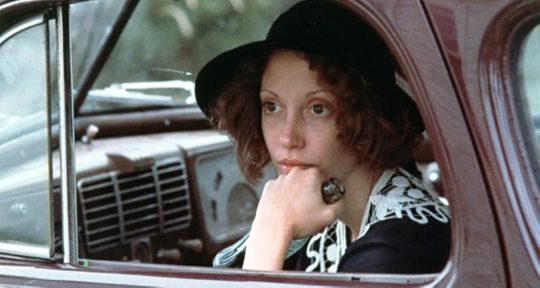
Young lovers Bowie (Keith Carradine) and Keechie (Shelley Duvall) yearn for a white picket fence, a quiet porch, and a case of Cokes (probably because that's all they drink in this film). Too bad Bowie is an escaped convict tied up with bank robbers. Too bad it's the Great Depression. At least there's plenty Coke. Want a Coke?
Most films set in the past do not as painstakingly recreate bygone worlds as strongly as Thieves Like Us. Set in Depression era Mississippi, this film captures the harsh, bleak reality and romantic, consumerist fantasies of its star-cross’d leads, played with sensuous naivete by Keith Carradine and the late, great Shelley Duvall. This is more than just yet another Bonnie and Clyde riff—it’s a tragedy about the elusive American Dream, with snippets of radio music, programs, and ads acting as a Greek chorus in a truly inspired touch. Robert Altman can be an acquired taste, but this is easily my favorite of his films to date.
Targets (dir. Peter Bogdanovich, 1968)

The paths of an aging horror star (Boris Karloff) and a psychotic mass shooter (Tim O'Kelly) cross at a drive-in theater.
Targets was not what I expected: it's a threeway character study between the disheartened horror star, the psychotic shooter, and 1960s America itself. To be honest, you could remake this movie now with a former ‘80s slasher star making the same musings and it would still seem credible—but then of course, you wouldn’t have Karloff in one of the best performances of his career. Targets is rendered even more chilling by its docudrama style. The violence shown isn’t sensationalistic, but presented in clinical detail, making it feel more authentic. Gorier films haven’t frightened me as much as this slow-burn character study.
Losing Ground (dir. Kathleen Collins, 1982)

Despite finding pleasure in research and theory, philosophy professor Sara Rogers (Seret Scott) envies the escatic nature of her painter husband, Victor (Bill Gunn). Their difference in temperaments and Victor's adulterous straying also strain the marriage. However, once Sara takes a job performing a sensuous, emotional role in a student film to get in touch with her own artistic side, Victor grows suspicious and jealous in turn.
Losing Ground was sold to me as a film about a crumbling marriage, but it's more than that. It might be more accurate to call it a portrait of self-discovery, a woman extending beyond her comfort zone to live more fully. I found myself strongly relating to Sara-- like her, I have a creative side I've often been timid to share, being more comfortable with the mind than the body. Being an independent film, it eschews the Hollywood histrionics and melodrama that would normally accompany this subject matter and it's paced perfectly at 90 minutes. Though filmed in the early '80s, the film only played the film festival circuit and never enjoyed a proper theatrical release. Only in 2015 was it rediscovered and then released on home video. The director Kathleen Collins died young, but this film stands a testament to her passion and talent.
Cactus Flower (dir. Gene Saks, 1969)

A middle-aged dentist (Walter Matthau) who poses as a married man to fend off romantic commitment decides to buckle down and wed his much younger girlfriend (Goldie Hawn, looking like a mod Tinker Bell). However, when she insists on speaking with his made-up wife, he recruits his no-nonsense nurse (Ingrid Bergman) into the charade.
Cactus Flower is what I often call a transitional film: released in the late ‘60s, it has one foot in the classical style of Old Hollywood and another in the more liberated counterculture that was shooting out hits like Easy Rider and The Graduate. Directed with unexciting competence by Gene Saks, Cactus Flower’s success largely comes from Ingrid Bergman, Goldie Hawn, and Jack Weston. Bergman I could watch in anything, so I’m biased perhaps, but she walks the fine line between funny and touching as the lonely woman who finds emotional liberation through her roleplaying. The scene where she gets groovy on the dance floor is a highlight of her entire screen career and no, I AM NOT KIDDING.
The Black Room (dir. Roy William Neill, 1935)

Two aristocratic brothers (both Boris Karloff) are at odds over the love of a young woman (Marian Marsh) and an ancient prophecy forecasting the end of their bloodline.
Boris Karloff dives into a double role in this deliciously gothic melodrama. Columbia pulled out all the stops for this one: it drips with sumptuous set design and expressionistic lighting. I was particularly taken by this film’s slightly tongue-in-cheek approach to a more 18th century mode of gothic terror. It goes for full-blooded melodrama with its innocent maidens, secret dungeons, lecherous villain, and ancient curses. It’s as close to a 1930s Castle of Otranto adaptation as we’ve got and by God, I'm grateful for its existence.
Freud: The Secret Passion (dir. John Huston, 1962)

In the late 1880s, young psychiatrist Sigmund Freud (Montgomery Clift) probes into the inner lives of his "hysterical" patients to discover the roots of their mental illnesses. However, these journeys into the subconscious worlds of others bring him into uncomfortable contact with his own demons.
Listening to a podcast episode on John Houston’s Key Largo led me to works of his I hadn’t heard of, such as Freud. I was initially skeptical it could be good. Biopics are my least favorite genre, but this film isn’t so much a biopic as a psychological drama in which Freud is the protagonist and some of his ideas are illustrated through his interactions with the other characters. Instead of wasting time being some melodrama ABOUT Freud the man (the route most biopics go regarding their subjects), it’s about his theories and philosophy, which is a far more interesting approach. The result is a probing, intellectual work. I’m not sure how close Montgomery Clift’s characterization is to the real Freud, but the real star of the show is Houston’s direction, a resurrection of German expressionist aesthetics blended with stark realism.
Paris is Burning (dir. Jennie Livingston, 1990)

This documentary covers 1980s NYC ball culture, where Black and Latino members of the LGBT+ community vogue and perform.
Documentaries are not usually my thing, but Paris is Burning was a longtime resident of my watchlist and I am glad I finally got around to seeing it. It has a time capsule quality, capturing a long-vanished 1980s New York City and the LGBT+ community living there at the time. Obviously, there is a lot of meditation on gender identity, sexuality, and the importance of community in a world hostile to your very existence, but I was also interested by the film's presentation of the materialism and consumption of the Reagan era.
Candyman (dir. Bernard Rose, 1992)
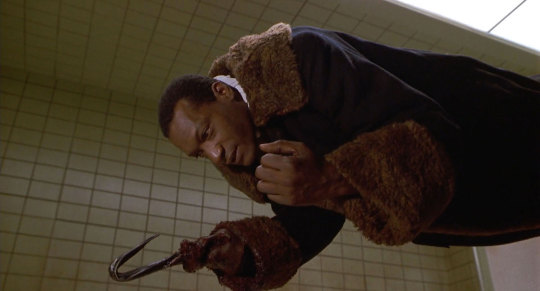
A graduate student (Virginia Madsen) studying urban myths unwittingly summons the Candyman (Tony Todd), the hook-handed ghost of a Black painter who was lynched decades ago.
I expected fun slasher nonsense and instead got a gorgeous, unsettling, modern gothic masterpiece that only occasionally dips its toes into schlock. Candyman is ethereal in all the right ways despite being suffused with despairing urban gloom. I was not surprised to find the script was adapted from a Clive Barker story—like Barker’s The Hellbound Heart (adapted into the Hellraiser films), Candyman is chilling yet eerily beautiful. The moment I finished watching it, I knew this was one I would be itching to revisit. There’s just so much going on regarding race, class, and memory in America. Also, Tony Todd’s voice is a damn treasure.
Merrily We Go to Hell (dir. Dorothy Arzner, 1932)

An alcoholic playwright (Frederic March) and his long-suffering wife (Sylvia Sidney) decide to have an open marriage. It doesn't work out well for either of them.
Merrily We Go to Hell is a sneaky piece of work. Reading the synopsis, one expects the usual salacious pre-code melodrama. The first scenes even resemble your usual romantic comedy, with our central couple having a meet-cute. The actual movie is much more complicated. It's about a married couple thinking love is enough to make their union work despite the husband's alcoholism. However, this idea proves erroneous and attempts to numb the pain through hedonism and extramarital vengeance just pour gasoline on the fire. The emotional honesty here is astonishing and even the "happy ending" isn't so uncomplicated when you think about it. So far, this is my favorite film of director Dorothy Arzner.
Up the Down Staircase (dir. Robert Mulligan, 1967)

An idealistic young teacher (Sandy Dennis) gets her first position at an inner-city high school. However, she finds her enthusiasm worn down by the school system's bureaucracy and the many psychological troubles of her students and fellow faculty.
Ever since I watched Four Seasons a few years ago, I’ve been intrigued by Sandy Dennis. No matter the role, I find her eccentric yet vulnerable screen presence compelling. Up the Down Staircase was Dennis’ first starring vehicle and an unsentimental look at the teaching profession. Having worked as a teacher and in similar jobs in the past, I related strongly to the main character’s compassion fatigue and her frustrated desire to help make her community a better place. While not a cheery film, it is ultimately an optimistic one, even if that optimism is cautious. And of course, Dennis is damn great as always, whetting my appetite for more of her work.
They Shoot Horses, Don’t They? (dir. Sydney Pollack, 1969)
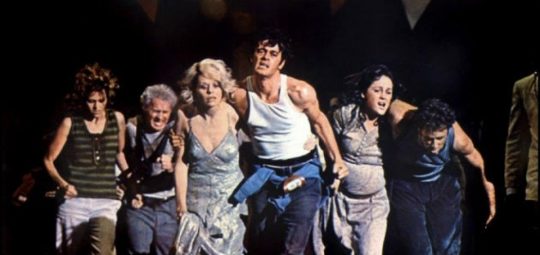
In the thick of the Great Depression, a group of desperate contestants sign up for a grueling dance marathon with a hefty cash prize. Greed, sexual exploitation, health problems, and crushing despair eventually complicate the exhibition.
This movie is so bleak you’ll be just as exhausted as the characters by the tragic finish. I know that doesn’t sound like much of a recommendation, but this is powerful stuff. It does what a great tragedy should do: make you emphasize with the characters and go out into the world more empathetic toward the people around you and more critical of a society in which such awful conditions could be permitted. And like Targets, it’s depressing that this movie’s themes remain relevant to American culture.
Flash Gordon (dir. Frederick Stephani and Ray Taylor, 1936)

A himbo polo player (Buster Crabbe), a middle-aged scientist in hot pants (Frank Shannon), and an ingenue in a blonde wig (Jean Rogers) must save the Earth from a galactic emperor.
Yes, I’m counting a film serial as a single unit on this list. In this corny, breathless saga can be found the seeds of so many modern blockbuster spectacles. The old school space opera aesthetic is always a joy and I love seeing what George Lucas borrowed from the comic book plot and fantastic images for his Star Wars films. Also, the serial is surprisingly horny for a product released after the death knell of the pre-code era, so that’s fascinating too. I watched the episodes, one a night, usually before a feature film, to recreate at least in part the conditions in which old serials were viewed. I highly recommend that approach if you're interested in watching these kind of films-- NEVER binge them.
Silkwood (dir. Mike Nichols, 1983)
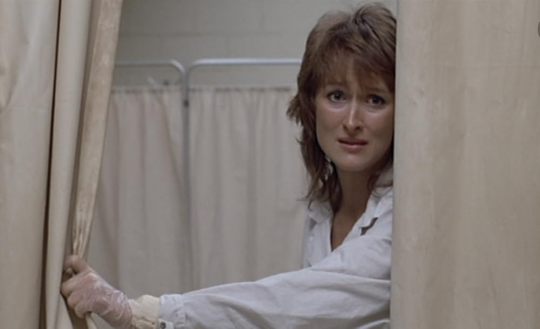
Karen Silkwood (Meryl Streep), a union activist and metallurgy worker at a plutonium processing plant, discovers both she and many of her co-workers have been contaminated with high levels of radiation due to blatant safety violations. Rather than remedy the problem, her employers are determined to keep her quiet, but Karen refuses to back down.
Meryl Streep's performance in Silkwood finally showed me what all the hype around her is about. What an astonishing, natural performance-- I forgot I was watching an actor every moment. As for the overall film, it's one of the stronger docudramas out there (as this film was based on a true story). It isn't just a preachy message piece and it allows Silkwood to be both a heroic figure and a flesh and blood human being with flaws like anyone. The domestic drama involving her lover (Kurt Russell) and lesbian roommate (Cher, who also gives an incredible performance) is almost as compelling as the main story. Though released in the early '80s, it feels like a late manifestation of the paranoia thriller genre of the decade before.
Love with the Proper Stranger (dir. Robert Mulligan, 1963)

When a one-night stand with a jazz musician (Steve McQueen) leaves her pregnant and at risk of upsetting her very Catholic family, an innocent sales clerk (Natalie Wood) tracks down her lover and demands he help her get an abortion.
Love with the Proper Stranger is such a unique piece of work that I can forgive the elements that dissatisfy me (like the ending). Wood and McQueen's romance starts out acidic and slowly becomes tender over the course of their bizarre misadventure, and the film itself shifts through several moods. Sometimes it feels like an urban drama, other times a romantic comedy. But it somehow holds together, perhaps because of the chemistry between the lead actors.
What were your favorite film discoveries in 2024?
#the window#my neighbors the yamadas#a new leaf#letter from an unknown woman#thieves like us#targets#freud the secret passion#candyman#sudden fear#cactus flower#flash gordon#the black room#up the down staircase#they shoot horses don't they#cash on demand#losing ground#paris is burning#merrily we go to hell#thoughts#silkwood#love with the proper stranger
45 notes
·
View notes
Text
FEMME FILM
In Celebration of Women Filmmakers
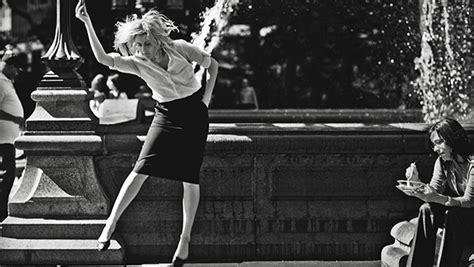
Greta Gerwig as Francis Ha!
Remember when that thing happened called the pandemic?
HAHA! Jk...of course we do. We're still living in a mad, disjointed post-pandemic world, four years later. The pandemic pummeled humanity and just about everything else - Hollywood included.
Covid re-wrote the Hollywood playbook. Theater attendance stopped cold. At-home streaming became standard entertainment practice. The last movie I went to see at the theater before the virus invaded was a little-known 2019 horror flick called The Lodge. I don't remember much about the movie, but, looking back, I feel bittersweet about the experience. How was I to know that would be my last, innocent foray before society unraveled in a such way that going to the movies would never be the same?
So what's the connection between the pandemic and female filmmakers, you might ask? Well, just when the Hollywood studios were on their covid-masked knees begging for something to save the theater experience (and their financial lives), along came:
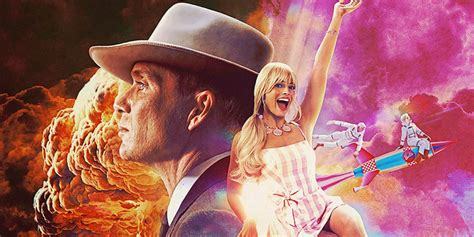
BARBENHEIMER!
Some say it was Top Gun Maverick/Tom Cruse that saved Hollywood after the virus, but I'm sticking to my pink atomic guns that it was the daring duo of Barbie/Oppenheimer.
WHAT A SUMMER! Those two films energized the movie-going experience like no other and Hollywood was as pumped as tween on Twizzlers and RedBulls.
Nolan's Oppenheimer is epic. It is historical. It is emotional. It is long. It is a history lesson about the annihilating evil that man created and that the world can (literally) be relegated to stardust with the push of a button. Applause, applause! Kudos, Christopher Nolan! Your Academy Awards and other trophies were well deserved!
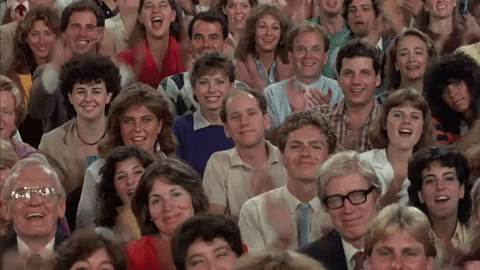
But Barbie? Greta Gerwig's Barbie is communal. It brought people together for a joyous theatrical excursion. Groups gathered at theaters all over the world, dressed in pink, creating bubble-gum colored watch parties, drunk on the female power the film reminded us we have, and sobered at the admonition that the patriarchy is very real. It was also the highest grossing film of 2023, gracing Hollywood with a 1.4 billion box office gift. Applause, applause! Kudos, Greta Gerwig! Your Academy Awar...
Oh. Wait.
The Academy Awards didn't happen for Barbie, other than best song, which is nice, but...
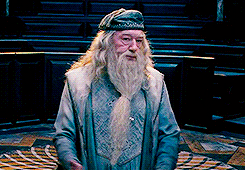
And them's the brakes (and I do mean brakes as well as breaks) for women in Hollywood. The good old boy network rules in LALA land just like it does everywhere else (click here to see the factual, if not depressing, data).
In this post Cinemagooey raises it's fist in solidarity to women filmmakers everywhere, those heroes of feminine empowerment who buck patriarchal odds to bring their creative vision to life and share it with the world, come hell or highwater.
Highlighted below are just some of the women filmmakers who serve as shining stars and beacons of hope for other film warriors who are following in their path:
ELAINE MAY

Elaine May and Walter Matthau in A New Leaf (1971)
Elaine May is a gift to humanity. A true genius, she's been a Broadway star, film star, playwright, screenwriter and director in her long, illustrious career. If you want to introduce yourself to her prodigious talent, I recommend starting with A New Leaf, in which she performed the Hollywood trifecta: writing, directing and starring in this hilarious black comedy. Other writing/directing credits include: The Heartbreak Kid, Mike and Nickey, Heaven Can Wait, Reds, Tootsie, The Birdcage and, famously Ishtar, the film that effectively ended her movie career (here's a little link to that fascinating story). May boasts even more directorial and writing credits, but there's too many to list here. Look her up and prepare to be amazed.
I could go on and on about Elaine May, but I'll save it for a post dedicated exclusively to her and her shining accomplishments. She was one of the early greats who painstakingly forged a path for others in the field.
Today's women filmmakers stand on May's shoulders and owe her a debt of gratitude. Cinemagooey salutes this original, one of a kind bad ass.
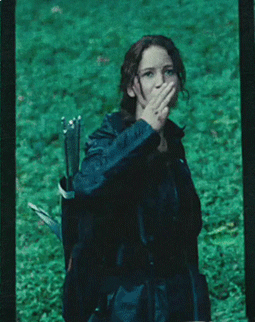
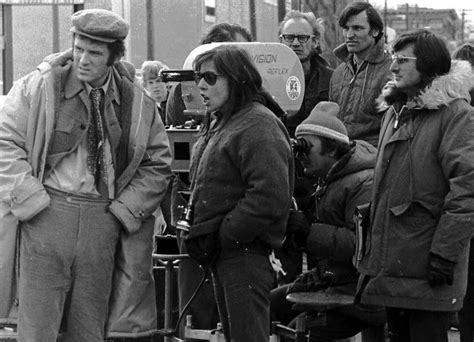
With Charles Grodin, directing The Heartbreak Kid
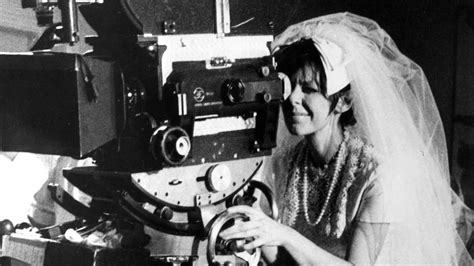
Directing A New Leaf
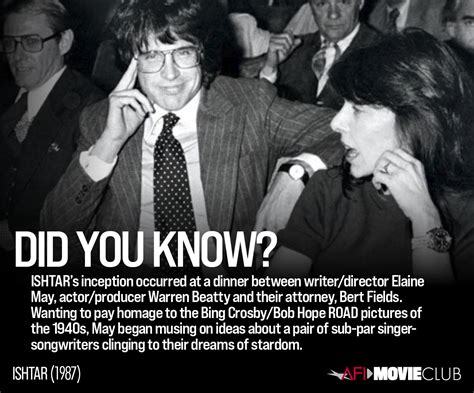
Schmoozing with the big boys, circa 1980s
NANCY MEYERS
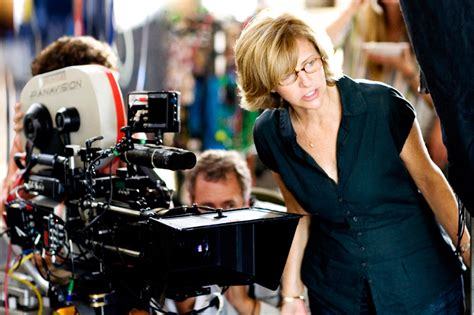
Nancy Meyers is the queen of the cozy romcom. When it comes to LOL-witty love stories that make us swoon, she slays. Meyers is renowned for directing comfy, side-splitting hits such as The Parent Trap (1998), Something's Gotta Give (2003), The Holiday (2006) and It's Complicated (2009), to name a few. She also wrote or co-wrote a number of smash hit screenplays, starting with my favorite, Private Benjamin (1980) but also crafting Irreconcilable Differences (1984), Baby Boom (1987) and the Father of the Bride franchise (1991, 1995 and 2020), just to name a few.

Directing Something's Gotta Give
Meyers is not only famous for her filmmaking acumen, her loyal Instagram fans are obsessed with the houses in her movies, homes that imbue a rich, intimate, put-your-feet-up-by-the-fire-and-let's-have-some-wine kind of coastal vibe. Follow her on Insta. You won't regret it. And watch her movies. You're welcome.
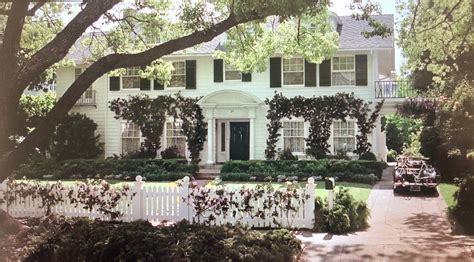

Above: Father of the Bride, starring this house
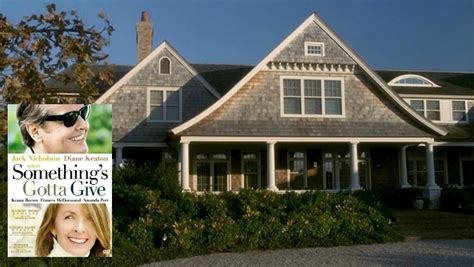
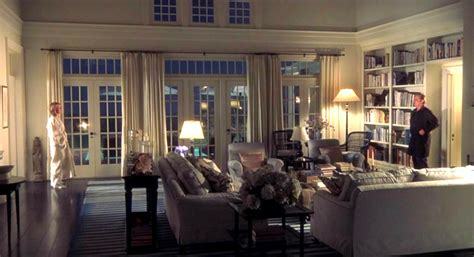
And the stunning beach home in Something's Gotta Give
PENNY MARSHALL
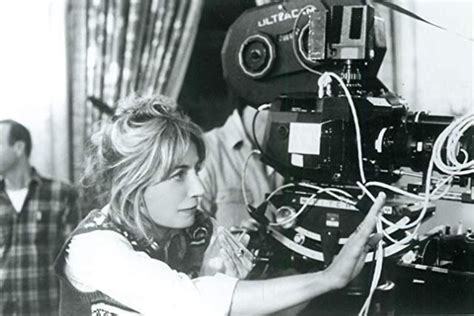
Penny Marshall Directing Big (1989)
Penny Marshall was a staple in my household in 1976 when she starred as Laverne DeFazio on the television sitcom Laverne and Shirley, about two working class gals sharing an apartment and comedic hijinks in Milwaukee. I loved that show. My sixth grade BFF and I conspired to live just such a life after high school (but with better jobs in a warmer climate). Life can upend the best of plans, howeve - that BFF and I never became Laverne and Shirley and when the show ended, Penny Marshall moved from comedic acting to cinematic directing - lucky for us.
Marshall directed a slew of hits in the 80's and 90s: Jumpin' Jack Flash, Big, Awakenings and The Preacher's Wife. But my all-time favorite is A League of Their Own, starring Geena Davis, Rosie O'Donnell, Madonna and Tom Hanks.
A League of Their Own (1992) (turn up the volume and watch this buddy moment between Madonna and Rosie O'Donnell)
The film is a Rosie-the-Riveter-meets-the-MLB story of the The All American Girls Professional Baseball League, an organization started during WWII when it was feared that men's baseball would die off as a casualty of war. The movie recounts an age when men marched off to the trenches and women were suddenly valued for more than their domestic talents, challenging patriarchal traditions and set-in-stone cultural beliefs. It's all heart and Madonna's moving "This Used To Be My Playground" theme song, as well as the reunion of the real life women who were in the league at the end of the film, poignantly encapsulate a brief, shining moment for women in sports.
Penny Marshall died in 2018. But her cinematic legacy and comedic versatility lives on in her extraordinary films, as well as the dozens of comedic roles she inhabited on t.v. (The Odd Couple, The Mary Tyler Moore Show, Frasier, Portlandia and Hocus Pocus, to name but a few). It's well worth your time to dig into her films to appreciate this one of a kind female director.
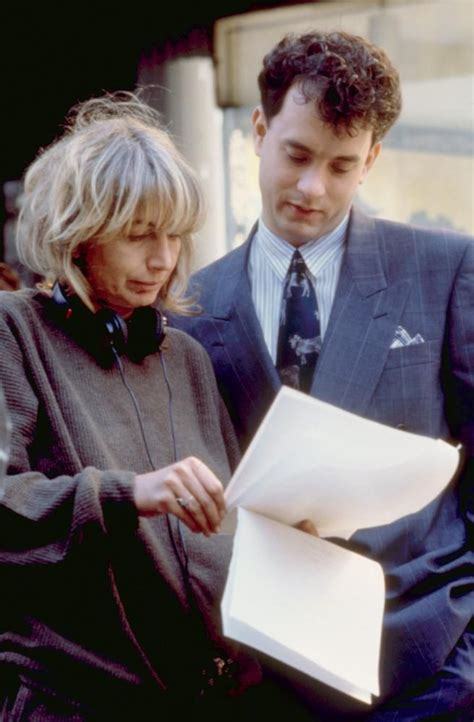
Directing Tom Hanks in Big (1988)
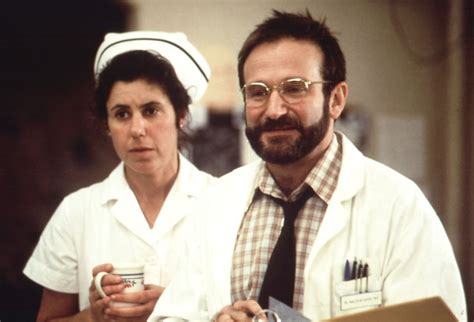
Awakenings, starring Robin Williams (1990). Pass the kleenex
GRETA GERWIG
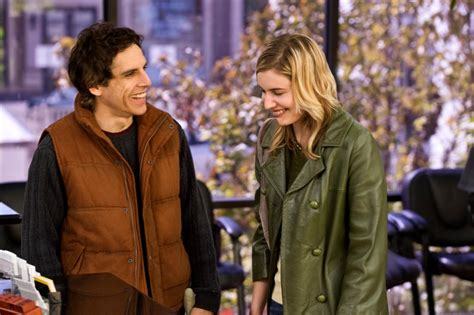
With Ben Stiller in Greenburg (2010)
Before Barbie and Lady Bird - two films that placed Greta Gerwig squarely on the Hollywood writing and directing map, she was the darling of a lesser known indie-film movement called Mumblecore. This cinematic genre peaked in the mid-aughts and is best described as movies with impromptu dialogue, realistic settings and low-budget markings. This is where Gerwig got her start in movies as an actress/sometimes screenwriter.
After mumbling her way through a myriad of films, Gerwig teamed up with her (now) real-life partner, Noah Baumbaugh and co-wrote and starred in a sweet little movie called Francis Ha!.
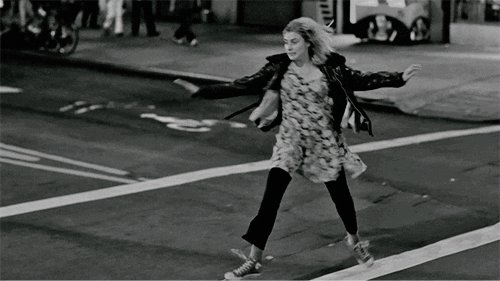
Gerwig, dancing through the streets of Manhattan in Francis Ha!
I fell, and am still, in love with Francis Ha!, a comedy about a dreamer living in NYC whose life is derailed when she loses her roommate and best friend, as well as her position in a dance company, rendering her an unemployed, aimless nomad. Francis Ha! became an indie smash, nominated for several awards (Golden Globe, Independent Spirit, London Film Critics Circle Film Awards, to name a few), and cementing Gerwig as a force in film.
Bouyed by this success, Gerwig wrote and directed Lady Bird (2017), Little Women (2019, an adaptation from the Louise May Alcott novel) and of course Barbie (2023). I can't wait to see what Hollywood's new femme-fab director brings to the table next. If it's an original movie that resonates with millions and draws in big crowds and big bucks, like Barbie did, maybe the Academy will finally give this remarkable talent the recognition she more than deserves.
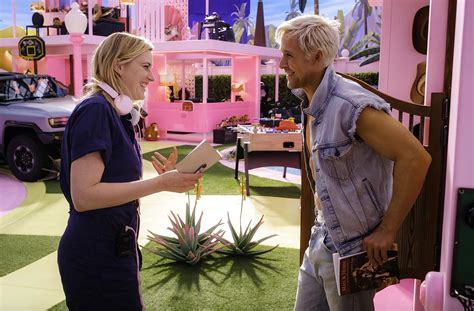
Gerwig, directing Ryan Gosling in Barbie
And there are more, but not enough...
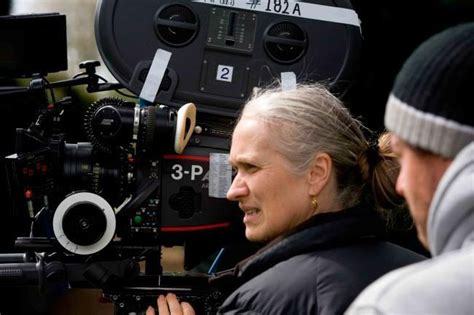
Despite the fierce odds against them, women have been fighting to share their celluloid visions with audiences since the advent of film (the first: Alice Guy-Blanché made her first movie in 1896). Hats off to the past pioneers and present day warriors who continue to fight the good fight and inspire future femme filmmakers everywhere. I wish I could write a tribute to them all, but here are a few of the greats and one film that I recommend from each, in no particular order:
Jane Campion The Piano (1993), Sophia Coppola, Lost In Translation (2003), Kathryn Bigelow, The Hurt Locker (2008), Ava DuVernay, Selma (2014), Nora Ephron, Julie and Julia (2009), Kelly Reichardt, Certain Women (2016), Debra Granik, Winter's Bone (2010), Lana Wachowski and Lilli Wachowski, The Matrix (1999), Jennifer Kent, The Babadook (2014), Charlotte Wells, Aftersun (2022).
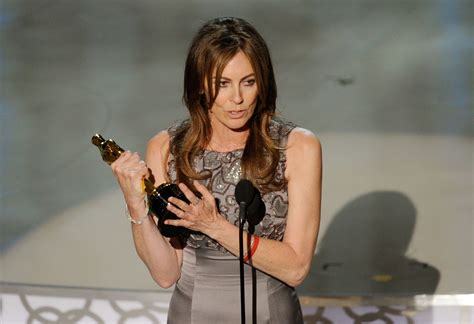
Kathryn Bigelow, making history as the first woman to receive the Oscar for Best Director for The Hurt Locker.
#barbie#greta gerwig#film#cinema#elaine may#penny marshall#jane campion#kathryn bigelow#female filmmakers#barbieheimer#sophia coppola#kelly reichardt#nora ephron#ava duvernay#charlotte wells#jennifer kent#women directors#women in film#nancy meyers#father of the bride#somethings gotta give
6 notes
·
View notes
Text

First up, we have the creator of our team! The amazing artist with a notable and captivating style, @saidochan0106 started Ishtar Creative Studio with the hope that she could not only give these artists and writers a place where they can confidently put out their creations, but also a source of joy for those who want to experience them while also supporting their talents.
She has had ample experience in zines, big bangs, and other fan events, and is as talented as she is hardworking!
Check out what she has to offer!
20 notes
·
View notes
Text
What happened to Miss May? A New Leaf (1971), the brilliant debuts of the improv star (1/4)
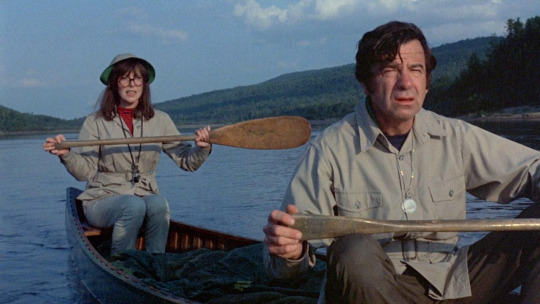
Elaine May and Walter Matthau in a scene from A New Leaf
Between 1971 and 1987, Elaine May directed four films. Her directing career began with the success of A New Leaf and ended with the poorly received and commercially unsuccessful Ishtar. It was marked by great creative inputs and troubled relationships with the studios. Following this period, Elaine May’s work was mostly forgotten and difficult to access. This series of articles aims to celebrate the work of an essential comedic genius and reclaim her influential style in Hollywood history.
“Miss May does not exist.”
Elaine May is an enigmatic figure who has cultivated mystery and rarely granted interviews, cautioning journalists that her statements might not be entirely truthful. The quote above was taken from Elaine May’s self-presentation on the cover of the comedy album Improvisations on Music (1958) she made with her partner Mike Nichols. They both gained popularity thanks to their elegant, witty improvisational sketches on television and Broadway. When the ‘Nichols and May’ duo parted ways in the early sixties, they both transitioned to Hollywood careers: Nichols’s first film was Who’s Afraid of Virginia Woolf? (1966), while May went on to make A New Leaf (1971).

Elaine May and Mike Nichols in the stage production An Evening with Mike Nichols and Elaine May (1960).
Elaine May wrote, directed, and starred in her debut film, infusing dark humor into an anti-romantic comedy. In A New Leaf, she portrays the adventures of a wealthy playboy (Walter Matthau) whose sole talent lies in living a vain life of luxury, caring only about his material possessions until he suddenly loses his fortune. He devises a plan to marry a rich yet clumsy and kind-hearted botanist (Elaine May) to eventually kill her. A New Leaf starts with an unforgettable opening scene and channels the screwball tradition and triumphant love trope throughout the film. Through this work, Elaine May establishes socially awkward characters as a recurrent theme in her filmography.

A glorious poster with the longest tag line ever
However, making the film was far from straightforward. May had no experience in film direction and many people from the production tried to take the film away from her. Consequently, the studio justified that she was paid only $50,000 as the director, writer, and co-star of the movie while the two producers each gained the same amount, and Walter Matthau received a substantial $350,000 paycheck.
Elaine May’s first series of clashes with movie studios –a recurrent theme throughout her career – started during the ten-month editing process of A New Leaf when May presented Paramount Pictures with a three-hour-long version of the film, which the studio did not consider to be an adequate length for a comedy. Paramount Pictures had specified in her contract that they had the right to cut the film as they liked and proceeded to hire a new editor who reduced May’s cut in half. May sued the studio, asserting that they had created a different film under her name. This legal battle led to a legendary encounter with a judge who, despite of ruling in favor of the studio, praised May for making such a hilarious film. The version known to the public today is the studio-approved one, with May’s darker director’s cut unable to be seen.
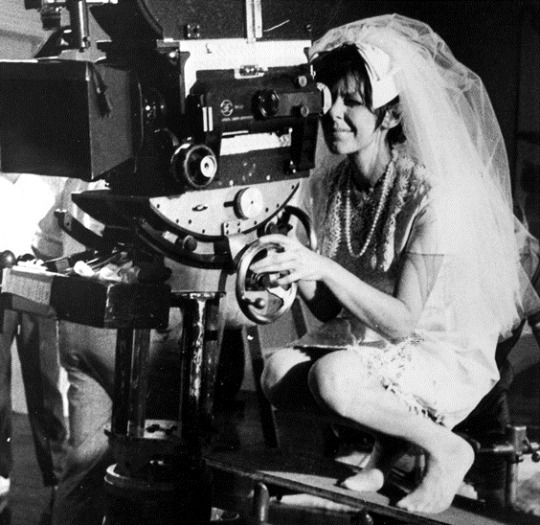
Elaine May shooting a scene of A New Leaf with her wedding dress costume on
Despite the troubled production of A New Leaf, May’s film paved the way for 1980s and 1990s comedy and inspired Nora Ephron and Woody Allen’s subsequent work. A New Leaf was inducted into the Library of Congress’s Film Registry in 2019, celebrating May as a trailblazer for comedy and female directors.
LisaMiaud
1 note
·
View note
Text
Project 1 : interview
Artist: Abbas Youssef
Place: Bahrain
Date: 20/1/2016
The meeting of the Kuwaiti poet and journalist with the artist Abbas Youssef, after the journalist Hoda Ashkanani asked him about the artistic climate in which he grew up, he told her with all transparency “ Like some creative people, I did not grow up in a nurturing artistic or family setting. I grew up in a village where the sea was a close companion and the palm was a close neighbor, a village surrounded by this magic, where the palms sing to the sound of crashing waves and the gentle breeze accompanying that blue.The Arabic lettering drew my attention early on. Soon I fell in love with lettering. A quick move, the journalist asked: It is about the walls of the Ishtar studio, in which you practice your artwork and your friend, the artist Abdul Jabbar al-Ghadban, and it is Ketko (I fear a person who does not read poetry), why exactly? He answered without hesitation that I might be fond of poetry in particular, and of other types of literature and all writings related to cultural, visual and human affairs in general. Moving from general questions to precise questions related to drawing, I asked him while you were forming and engraving the letter, how do you feel the steps of the letter in your paintings? He answered: “The letter is flowing up and down, I touch it like a living being, ask and answer, go and follow, move in the space of cloth and paper, and I watch and rejoice, I see him simplify his being with focus and steadiness. These are the most important questions that were asked in the interview.

https://www.instagram.com/p/BA2UUAqnJ1f/?utm_medium=copy_link
3 notes
·
View notes
Text
DAY 4361
Jalsa, Mumbai Feb 14/15, 2020 Fri/Sat 2:48 AM
Birthday - EF - Rajinder Sehgal .. Ef Ishtar Saiyadi .. Ef Rita Varma .. Saturday, February 15 .. happiness and greetings on your birthdays from the Ef ..
It is the rhythm of the evening and the closed environs of the Studio that has kept me away .. but those are the times of intense creativity and appreciation of them that have secured their place in the annals of music history .. just the joy of listening to them is sufficient to keep the heart warm and secure ..
.. though it must be said that there is a distinct audience needed for the appreciation of that appreciation .. being in tune is not just the expression for the notes to be in time and place and in the correct ‘sur’ .. those present and in the company of which the music is designed and played should be of the music literate within the norms of that which as been created .. nothing could be worse off than the fact that there is an indifference to the creation because the surroundings are not compliant with what is to be understood ..
.. many a times , there is scant respect for the artist performing .. a concentrated creative artist that has spent his entire life in the learning and educating of the craft, is overlooked by what else occurs .. people socialising, and involved in the party atmosphere, when the classical artist performs .. it is a great disrespect to the artist I feel , and one that needs to be understood and given status ..
.. so best not to allow yourself to be in a situation where the possibility of such an atmosphere could prevail ..
.. many may not know you or your craft .. but then if they are in disinterest then best not to keep the artistry .. or the performance .. a select silent appreciative audience augurs well for such a moment ..
.. I am in travel in a few hours ..
good night ..

Amitabh Bachchan

147 notes
·
View notes
Text
LiSETH ft. wingman marina
hi guys i finally wrote a thing, it’s kinda dumb, RIP mobile users
[LISA🎸: Omg! Haha really
Space Ishtar's Boyfriend: yeah there were no lights in there either Space Ishtar's Boyfriend: blake had to bring in richs studio light it was great Space Ishtar's Boyfriend: i mean at least the coffee was good??
LISA🎸: What kind of coffee was it??
Space Ishtar's Boyfriend: snickerdoodle. and cookies too that shit slapped
LISA🎸: Nice!! I think I'm going to make snickerdoodle cookies for Roselia's next practice LISA🎸: Do you want to help?
Space Ishtar's Boyfriend: hell yeah brother! save some for the sound guy :p
LISA🎸: Haha of course! Next practice is Wednesday so I was thinking about getting a head start tomorrow LISA🎸: Are you off?
Space Ishtar's Boyfriend: later in the day yeah, popipa wants to do a gig at circle in the evening Space Ishtar's Boyfriend: if u meet me at circle around like 6ish we can get started Space Ishtar's Boyfriend: anything i should bring
LISA🎸: Sounds good!✨ LISA🎸: Nope! I have everything I need
Space Ishtar's Boyfriend: hell ya.. im gonna bip now since i kinda gotta be up early for prep or else marinas gonna poon me
LISA🎸: Night! Good luck with PoPiPa tomorrow💙
Space Ishtar's Boyfriend: kasumis a handful but the rest of them are okay gsdkjghk Space Ishtar's Boyfriend: night!!💚]
"Cheers!" All five members of Poppin' Party, plus Seth and Marina, clink their plastic glasses together in celebration of another successful live show. Kasumi, ecstatic as always, gets half a smile from Arisa, who pleads for Saya to help her. O-Tae and Rimi make small-talk about how they can synchronize their instruments more, while Marina and Seth make idle talk while Seth packs up. "Where are you going, Seth? I thought you liked to stay behind for a little bit." "Prior reservation, Marina." Seth zips his signature green backpack up and hoists it onto a shoulder. "I normally would, but this is really important." "Like, bad important?" "Nah. Just important." Marina raises an eyebrow. It's rare that Seth leaves early, but when he does, it's critical business. "What'cha doing, then? If you don't mind me asking." "Baking cookies." "With who?" "That's classified information." "Just tell me who." "No." "Why not?" "You're going to bully me about it." "I am not! Just tell me who it is." "Lisa." Marina laughs. "Lisa? I knew you liked her- I just didn't expect you two to be going on a date this early." "Shut the fuck up, Marina. I hate you." Seth takes a sip of his drink- Brisk raspberry tea- to cover the fact that he's clearly very flustered. "What's wrong with liking Lisa? You two would be cute together!" "Yukina and Sayo would probably kill her, Ako's a wild card, and Rinko... Rinko's fine. But the first two of them would get mad." "Why?" "They'd be all like, oh, 'Lisa, you're no longer totally dedicated to Roselia, either dump him or dump the band.' And I don't wanna be the reason she has to give up Roselia." "There's no guarantee they'd be mad, Seth. I mean, those reactions are a little in-character, but- it's best to be honest, you know?" "I do know." Seth opts to look at his drink instead of Marina. "I just don't wanna be honest." "Seth..." The person in question picks his head up. "Aren't you and Lisa already great friends? Her face lights up when she sees you! I can tell she's interested in what you like- I mean, she asked for another one of your Letterbomb shirt, right? And she always saves a pastry for you after practices. I think she's already a step ahead of you." "I hate when you're right." "Heh. Of course you do. Just ask her out, you big idiot." "No promises." The doorbell of CiRCLE rings, and in walks Lisa herself, dressed in her usual casualwear plus a fluffy beige coat and small messenger bag to serve as her purse. "Hiya, Lisa!" Kasumi says, turning to wave to her. Lisa gives an enthusiastic wave back, complete with her signature smile, before heading on over to where Marina and Seth are milling about." "Hey, you two! How was it?" Lisa asks, bubbly as ever. "Smashing success. Initial sounded fantastic." Seth replies. Marina nods in agreement. "Do you need help with anything, Marina? Just while I'm here, you know." "Nope. You're free to go." Marina nudges Seth in the arm as a sort of "go have fun on your date" message. "Okay! You ready, Seth?" "I've never baked before, but I'm sure I can figure it out." Seth finishes his tea and begins to walk out of CiRCLE with Lisa, throwing away his cup near the door. "Seth!" Marina calls as he's just about to exit. Seth, as well as Lisa, turn around, to see Marina giving an enthusiastic thumbs-up to her sound engineer. Seth replies with a thumbs-down, to which Marina shakes her head. Seth and Lisa turn back around. "What was that?" Lisa asks. "Dunno." Seth shrugs, and the two of them continue walking towards Lisa's place. [bandori 'five minutes later' introduction card] "-So I guess there were some hitches with Kasumi's vocals at the end, but I think that's 'cause I set the gain too high and just forgot to change it. Like- their vocals all go into separate channels, so there's no way I would've, like, turned it up for Rimi's part and forgot to have changed it, but, like, who knows." "I'm glad it went well, though. Didja have fun?" "Oh- yeah, of course. I'm kinda sad you weren't able to be there for Initial. it was fuckin' great." "I know, right? I remember hearing it when you drove me to school the other day. Which, by the way- thank you." "Oh, no problem. And Garret says I drive the Slowbalt..." Seth sighs, remembering how the two of them still arrived to school at eight despite Lisa saying she was running over that morning. Lisa laughs, and the two of them continue walking until Lisa pipes up as they reach her house. "Um, Seth?" Lisa stops walking, and Seth follows suit. "Yeah?" "Can we talk? It's nothing bad, I promise." "Huh? Yeah, sure. What's poppin'?" "Well... Yukina might get mad at me for doing this, but... I really like you. And I was wondering... if you wanted to be my boyfriend?" "Uh- I mean- I, uh- hm." "Sorry." "No, no! I just- I don't want to get you kicked out of Roselia. Because I know they mean a lot to you, and I didn't know how Yukina would react, and... you really care about me that much?" "Of course I do, or else I wouldn't have asked." "I... do want to be your boyfriend, Lisa. I love you." Lisa flashes a bright smile at Seth. "I love you too."
[LISA🎸: Thanks for helping me tonight! Couldn't have done it without you✨
Space Ishtar's Boyfriend: no problem
LISA🎸: You ok?
Space Ishtar's Boyfriend: brainfreaked over being ur bf
LISA🎸: Sorry haha LISA🎸: If it makes you uncomfortable we can work something out
Space Ishtar's Boyfriend: no no that's not it, dw! its just weird Space Ishtar's Boyfriend: bassist of roselia and the sound engineer of circle dating.. wack timeline
LISA🎸: I don't think so LISA🎸: Do you mean that like 'I can't believe Lisa and I got together' or?
Space Ishtar's Boyfriend: ya
LISA🎸: Aw Seth :( LISA🎸: Don't say stuff like that LISA🎸: I wouldn't have fallen in love with you without lots of good reasons LISA🎸: I can list them even
Space Ishtar's Boyfriend: fire away
LISA🎸: Well you're super smart- you're taking three math classes after all LISA🎸: You know a billion more things about sound engineering than I do and that's saying something LISA🎸: You're super creative and I love seeing your stuff even if you don't like it LISA🎸: (BTW that last part of Letterbomb was really good, I think you did a good job with the fight scene) LISA🎸: And you're funny too, not to mention cute LISA🎸: There's a million things I see in you that you might not see in yourself LISA🎸: But I'm here to remind you of those things!⭐️
Space Ishtar's Boyfriend: [crying_cat.jpeg] Space Ishtar's Boyfriend: thank u sm lisa ilu
LISA🎸: No problem!! I love you💙]
2 notes
·
View notes
Note
The thing about Ishtar is that it really was a difficult production and it cost the studio, Columbia, a LOT of money. It lost almost $40 million dollars, and this was back in the 80s, so that’s a lot of money. This was all blamed on Elaine, of course, who had a reputation for being extremely difficult to work with. Namely, that she was always insisting on her way or the highway, even if it wasn’t the best choice for the overall film.
But here’s the thing. In context, this makes perfect sense to me, because Elaine May has never had complete control over any of her films.
The original cut of her first film, A New Leaf, was THREE hours long. After ten months of editing and being behind schedule, Paramount took her footage away, re-edited it to the version we have now, and released it without her permission. Elaine May sued Paramount to prevent them from releasing it and to take her name off of it. She lost. This was her FIRST film, and her studio took it and re-cut it!
So then she goes to make her second film, The Heartbreak Kid, which is a Neil Simon screenplay. I love this film, and production went fine, but Neil Simon had a stipulation that Elaine had to film at least one take the way he wanted it done, and a lot of these scenes made it into the final cut. I maintain that this film is still in her style, and I don’t think anyone else other than her could have made it, but I want you to think about that for a minute. Your first film is taken from you and re-cut, and your second film is being overseen by your male colleague. You don’t have the complete artistic control you’re looking for.
Mikey and Nicky, her third film, was another troubled production. Elaine May shot a record-making length of film, eclipsing Gone with the Wind, and was once again bogged down in editing. Paramount threatened to take her footage away from her AGAIN (honestly, fuck Paramount) and it escalated to the point where Elaine (with the support of John and Peter) held the footage hostage to prevent them from taking it and messing with it. Again, she lost final cut privilege. Not only that, but Paramount was so pissed off that they dumped the movie in a limited release and barely marketed it. It was a box office failure, they blamed Elaine, and she was blacklisted from directing in Hollywood again for ten years. It wasn’t until Warren Beatty (who she wrote Heaven Can Wait for) and Dustin Hoffman (who she doctored the Tootsie script for) vouched for her that she could even get Ishtar off the ground.
No wonder she INSISTED on creative control on Ishtar. She had her process tampered with on all of her films. I would have been LIVID.
And the thing about Elaine? She wasn’t any out of the ordinary difficult than some of Hollywood’s favorite male filmmakers. She was pretty tame compared to a few of them, but because she was an outspoken woman filmmaker who refused to back down, the studios got pissed off and leaked negative press to tank it ahead of time (which, disclaimer, has never been proven but people including Mike Nichols believe this to be the case) and that’s why we know Ishtar as this Truly Horrible Film and Notorious Box Office Bomb.
I’ve seen Ishtar. It’s really funny. I was baffled that this was the notoriously hated Hollywood flop that literally ended Elaine May’s directing career. It’s not perfect, but it’s definitely not deserving of that reputation.
It’s literally just another fucking example of Hollywood sexism at work. Watch Ishtar. Fucking JUSTICE for Elaine May.
For the film meme, Ishtar 😈
never seen | want to see | the worst | bad | whatever | not my thing | good | great | favorite | masterpiece
i hate that this film has the reputation it does because it’s funny and not to tinhat but the studio bombed it on purpose and then blamed elaine because they were sick of her.... elaine may innocent!
i need to rewatch this, it’s the one elaine may film i’ve only seen once
18 notes
·
View notes
Text
Critical Mass exhibition celebrates Lebanon's female graphic designers
The four female graphic designers showcased in a group exhibition at Beirut Design Week are hoping their event will help bring change in an industry where "women aren't really taken seriously".
The Critical Mass: Women in Graphic Design brings together four designers with diverse styles. Photograph by Rima Sabina Aouf/Dezeen
The exhibition, titled Critical Mass: Women in Graphic Design, brought together the work of graphic designers Samar Haddad, Rana Zaher, Yasmine Darwiche and Stephy Ibrahim.
The four women all have diverse styles and practices – from Haddad's pop-culture homages to Zaher's mythology-rich illustrations. This was part of the attraction for the organisers of Beirut Design Week, who wanted to showcase the breadth of these designers' interests.
The exhibition was held at venue KED during Beirut Design Week in May. Photograph by Rima Sabina Aouf/Dezeen
"The majority of students in university who study graphic design are women, and most of them end up working in companies who do purely commercial work," Beirut Design Week creative director Doreen Toutikian told Dezeen.
"I felt like there wasn't a platform or a space where their artistic talents as graphic designers were appreciated, so we decided to bring these four women together for an exhibition. We picked these four specifically because they are quite new, very talented and have totally different styles."
Among the exhibiting designers was Stephy Ibrahim, whose work focuses on the architecture of cities
The designers involved said they had previously struggled to get recognition for their work, and that their struggles were made harder by being women in the industry.
"Unfortunately countries abroad have more resources," Zaher told Dezeen. "I have to travel to get most of my art materials, and people appreciate what we do more abroad."
Ibrahim's illustration of Amsterdam reduces the city to its unique architectural pattern
Haddad, who is the founder of studio Space Vacation, added: "Sometimes women aren't really taken seriously as designers because sadly it's still a patriarchal society and some people here prefer working with men. This exhibition is trying to change this."
All-female shows have been rife at design weeks around the world this year, as discussions about gender discrimination have come to the fore.
Rana Zaher, who is also an archaeologist, creates mythology-rich illustrations
The architecture and design industries internationally are largely dominated by men, with industry studies showing huge disparities in pay, as well as problems relating to long hours and childcare.
Zaher weaves in motifs from ancient Assyrian, Babylonian and Levantine cultures
Two major shows featuring only female designers featured at NYCxDesign last month, where designers said they were spurred by the inauguration of President Trump and the subsequent wave of global "women's marches".
Yasmine Darwiche blends photography and illustration in her practice
Milan also saw its share of women-focused displays, including one by De Castelli that asked female designers to give metal furniture an "emotional allure".
At Beirut Design Week, where Critical Mass ran from 19 to 26 May at the central KED exhibition venue, the focus was on the diversity of the women's work.
She takes long strolls through Beirut, photographing in black and white, and then drawing on top of the images
Darwiche blends photography and illustration in her practice. She takes long strolls through Beirut, photographing in black and white, and then drawing on top of the images to bring out the city's architecture.
Ibrahim, who produces work under the name Saturn in Motion, also focuses on architecture, but reduces it down to the minimal and abstracted patterns she thinks unique to a city. So far she has illustrated Beirut, Berlin, Vienna, Rotterdam, Athens and Amsterdam.
Haddad's Game of Thrones poster features the characters arranged like they're in a school photo
Haddad designs posters based on movies and TV series such as Alien and Baz Luhrmann's Romeo and Juliet. One features the characters of Game of Thrones arranged like they're in a school photo.
Zaher, who is an archaeologist as well as a graphic designer and illustrator, creates intricate images that weave in motifs from ancient Assyrian, Babylonian and Levantine cultures. Her work incorporates figures like Ishtar – the Mesopotamian goddess of love and war – and has an activist bent.
She bases her designs on movies, TV series and other pop culture
"All these things were once part of a great civilisation, but now no one talks about it, no one sees it," she said. "And these days this culture is kind of endangered, with all the terror and all the destruction that's going on, especially in Iraq in Mosul, Nimrud and Nineveh, and Syria."
"I think it's kind of our job as designers and illustrator of this region to put forward this culture."
Related story
All-women design shows are "snowballing" in New York following Trump inauguration
The post Critical Mass exhibition celebrates Lebanon's female graphic designers appeared first on Dezeen.
from ifttt-furniture https://www.dezeen.com/2017/06/04/critical-mass-exhibition-celebrates-lebanon-female-graphic-designers-women-beirut-design-week/
0 notes
Text
Critical Mass exhibition celebrates Lebanon's female graphic designers
The four female graphic designers showcased in a group exhibition at Beirut Design Week are hoping their event will help bring change in an industry where "women aren't really taken seriously".
The Critical Mass: Women in Graphic Design brings together four designers with diverse styles. Photograph by Rima Sabina Aouf/Dezeen
The exhibition, titled Critical Mass: Women in Graphic Design, brought together the work of graphic designers Samar Haddad, Rana Zaher, Yasmine Darwiche and Stephy Ibrahim.
The four women all have diverse styles and practices – from Haddad's pop-culture homages to Zaher's mythology-rich illustrations. This was part of the attraction for the organisers of Beirut Design Week, who wanted to showcase the breadth of these designers' interests.
The exhibition was held at venue KED during Beirut Design Week in May. Photograph by Rima Sabina Aouf/Dezeen
"The majority of students in university who study graphic design are women, and most of them end up working in companies who do purely commercial work," Beirut Design Week creative director Doreen Toutikian told Dezeen.
"I felt like there wasn't a platform or a space where their artistic talents as graphic designers were appreciated, so we decided to bring these four women together for an exhibition. We picked these four specifically because they are quite new, very talented and have totally different styles."
Among the exhibiting designers was Stephy Ibrahim, whose work focuses on the architecture of cities
The designers involved said they had previously struggled to get recognition for their work, and that their struggles were made harder by being women in the industry.
"Unfortunately countries abroad have more resources," Zaher told Dezeen. "I have to travel to get most of my art materials, and people appreciate what we do more abroad."
Ibrahim's illustration of Amsterdam reduces the city to its unique architectural pattern
Haddad, who is the founder of studio Space Vacation, added: "Sometimes women aren't really taken seriously as designers because sadly it's still a patriarchal society and some people here prefer working with men. This exhibition is trying to change this."
All-female shows have been rife at design weeks around the world this year, as discussions about gender discrimination have come to the fore.
Rana Zaher, who is also an archaeologist, creates mythology-rich illustrations
The architecture and design industries internationally are largely dominated by men, with industry studies showing huge disparities in pay, as well as problems relating to long hours and childcare.
Zaher weaves in motifs from ancient Assyrian, Babylonian and Levantine cultures
Two major shows featuring only female designers featured at NYCxDesign last month, where designers said they were spurred by the inauguration of President Trump and the subsequent wave of global "women's marches".
Yasmine Darwiche blends photography and illustration in her practice
Milan also saw its share of women-focused displays, including one by De Castelli that asked female designers to give metal furniture an "emotional allure".
At Beirut Design Week, where Critical Mass ran from 19 to 26 May at the central KED exhibition venue, the focus was on the diversity of the women's work.
She takes long strolls through Beirut, photographing in black and white, and then drawing on top of the images
Darwiche blends photography and illustration in her practice. She takes long strolls through Beirut, photographing in black and white, and then drawing on top of the images to bring out the city's architecture.
Ibrahim, who produces work under the name Saturn in Motion, also focuses on architecture, but reduces it down to the minimal and abstracted patterns she thinks unique to a city. So far she has illustrated Beirut, Berlin, Vienna, Rotterdam, Athens and Amsterdam.
Haddad's Game of Thrones poster features the characters arranged like they're in a school photo
Haddad designs posters based on movies and TV series such as Alien and Baz Luhrmann's Romeo and Juliet. One features the characters of Game of Thrones arranged like they're in a school photo.
Zaher, who is an archaeologist as well as a graphic designer and illustrator, creates intricate images that weave in motifs from ancient Assyrian, Babylonian and Levantine cultures. Her work incorporates figures like Ishtar – the Mesopotamian goddess of love and war – and has an activist bent.
She bases her designs on movies, TV series and other pop culture
"All these things were once part of a great civilisation, but now no one talks about it, no one sees it," she said. "And these days this culture is kind of endangered, with all the terror and all the destruction that's going on, especially in Iraq in Mosul, Nimrud and Nineveh, and Syria."
"I think it's kind of our job as designers and illustrator of this region to put forward this culture."
Related story
All-women design shows are "snowballing" in New York following Trump inauguration
The post Critical Mass exhibition celebrates Lebanon's female graphic designers appeared first on Dezeen.
from RSSMix.com Mix ID 8217598 https://www.dezeen.com/2017/06/04/critical-mass-exhibition-celebrates-lebanon-female-graphic-designers-women-beirut-design-week/
0 notes